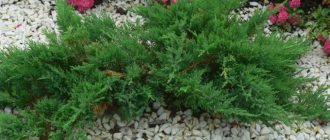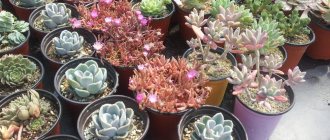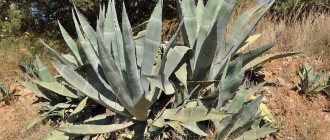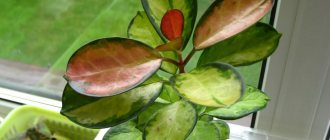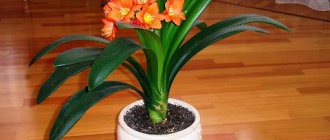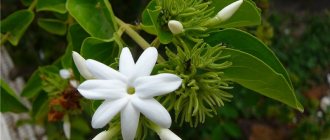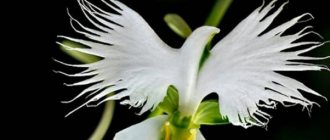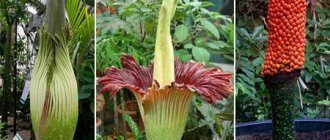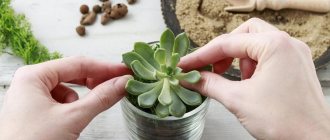First of all, it depends on the type of plant. In the reviews posted on our portal you will find the lighting requirements for each type of succulent.
For example, most Haworthias and Gasterias prefer shade, but can tolerate direct sunlight. Many, but not all, cacti grow well in full sun.
Ensuring optimal lighting often comes down to observing:
Excessive bright direct light can damage the plant (dark, dry spots).
Lack of light can spoil the shape of the plant (lose color, stretch out).
Compact shape, strong stems and leaves and bright colors are signs that everything is in order.
Possible problems:
- on the windowsill, plants receive about 60% of external lighting (it is absorbed by curtains and dust on the glass);
- From October to February, plants are in low light conditions.
When studying plant descriptions, you may come across different lighting requirements:
Types of lighting
Direct light
Plants are kept outdoors in direct sunlight.
South windows.
Indirect light
The sun's rays pass through some kind of obstacle or are reflected from the surface.
Windows facing east.
Bright light (full sun)
There are no barriers between the light source and the plant.
South or west window.
Diffused light (penumbra)
Light that is diffused or transmitted through a transparent curtain.
Low light
The plant is not exposed to direct sunlight.
North windows.
In Russian conditions, it is best to keep succulents on a south or east window. It is necessary to arrange the pots freely so that the flowers do not obscure each other.
The duration of daylight for succulents should be at least 10 hours, optimally 12-15 hours. Required illumination: 10 - 20 thousand lux.
North windows
Lowest illumination, suitable for shade-loving plants.
South windows
They give you the brightest one. intense light. For plants that need bright, direct light.
East windows
Lots of early morning sun (less intense than afternoon sun).
West windows
Lots of afternoon and evening sun, can be strong on summer days.
Lighting requirements for some varieties of succulents:
- Shade-tolerant (most often dark green): some gasteria, haworthia, sedum, agave echeveria, rhipsalis, schlumbergera.
- Diffused light: aloe, Kalanchoe, Crassula and related species, some Haworthias.
- Direct light (dense leaves, waxy coating, pubescence): lithops, sedums, young, cacti, echeveria, adenium.
In summer, you can take your pets outside, placing them in a well-lit area. Even the hardiest indoor plants need to be acclimated to the sun gradually. During the first days, succulents are placed under the shade of trees or protected from the sun with white lutrasil.
Collector Ginelle Leon advises rotating potted plants every couple of weeks to keep them from leaning towards the light.
Aeonium
This plant has very beautiful and spectacular rosettes. The stems may become woody over time. Some species grow up to 1 meter in height.
Flowers appear on the plant from the end of winter, and flowering continues until the end of spring. The flowers are white or yellow. They look very beautiful. These can be tall multi-flowered cones or scattered small bushes consisting of tiny flowers.
After flowering the plant dies. However, it reproduces offspring that remain after the parent. The plant looks very beautiful, so it can easily become a spectacular decoration for any garden plot or flower pot.
Aloe
It is an evergreen medicinal plant that grows throughout the year. In summer it can bloom with yellow flowers.
They will decorate the yard and produce a harvest: the best ideas for above-ground beds
The seeds will give a rich harvest. What prayers will help summer residents
With high ankle boots and more: what to wear with sweatpants for ladies over 40
Aloe does best in full sun, but can easily tolerate some shade. Aloe prefers sandy and well-drained soil. As with most succulents, watering is needed when the soil gets dry, but aloe can tolerate drought. Watering is especially important during the growth and flowering period.
Rosettes with green and variegated leaves look very beautiful in pots. However, it is worth remembering that when growing aloe as a houseplant, it very rarely blooms.
Water and fertilizer for succulents
When succulents are watered, they feed on stored moisture. If the soil dries out completely, the roots may dry out and growth stops. Some succulents are capable of root regeneration when rain returns, but it's best to keep the soil moist. The rule is to water succulents once a week in the summer, twice a month in the spring and fall, and monthly during winter dormancy. Increasing or decreasing the amount of liquid depends on common sense: soil type and thickness, time of year, relative humidity, intensity and duration of sun exposure, ambient temperature, and plant type. To feed succulents, give succulents a balanced liquid fertilizer, prepared as directed, once or twice in the spring (or fall for summer dormant varieties such as senecios and aeoniums).
Crassula
This is a very beautiful indoor plant that has long been grown on windowsills. Crassula tolerates almost any soil as long as it is well-drained. This plant prefers bright light, but tolerates shade well.
If Crassula is not refined and allowed to grow as it pleases, then over time it turns into a huge shrub that can reach 1 meter in height, with branched trunks and fleshy leaves.
Bookmakers predicted what place Manizha will take at Eurovision 2021
Who lived the best under the USSR? Things people were jealous of when they arrived in Georgia
Ancient octopus ancestors may be 30 million years older than people thought
To successfully grow this plant, no fertilizer is required. When grown indoors, Crassula blooms very rarely, but outdoors you can expect tiny white or pink flowers to appear very quickly, blooming from late autumn to early winter.
Beautiful design options and compositions
Most often you can see succulents on sale in florariums: special transparent vessels for growing them. As a container, you can use a regular aquarium or a special jar created for flowers.
Echeveria
There are many different varieties of Echeveria. All known varieties of this plant are distinguished by their classic rosette shape and variety of leaves. Evergreen leaves come in a variety of shades, and flowers of various colors are located on thin stems. Echeveria is very hardy.
This plant prefers full sun or partial shade and sandy, well-drained soil. There is no need to apply fertilizer, but a slow-release nitrogen fertilizer can be used. When watering, you want the moisture to fall on the soil and not on the leaves. This will help protect the wax coating and prevent rotting.
Depending on the variety, this may be a low-growing groundcover variety or saucer-sized rosettes on the stem. You can trim the plants and root the cuttings.
Shade-tolerant indoor plants for northern windows
There are not so many flowers suitable for growing on northern windows - this is the opinion of most home flora lovers. And they are not very wrong. Indeed, few of the popular indoor plants are capable of blooming on northern windows. However, there is a huge variety of decorative deciduous crops that are in no way inferior in beauty to flowers, and sometimes even surpass them.
For a room with windows facing north - a room, a hall or a study - it is quite possible to select plants not only for the window sill, but also those that will feel good away from the window. Some of them will be located on the floor in flowerpots, others will occupy the walls and space under the ceiling. Well, the windowsill will go to those who are least shade-tolerant.
If you start “populating” the room with green pets from the farthest corner, gradually moving towards the windows, the plants will be arranged approximately as follows:
1. Aspidistra
Aspidistra is a member of the lily family, which easily acclimatizes in poorly lit places. This flower can be safely placed in the farthest corner of the northern room. Even if there are no windows at all, the plant will have enough artificial lighting.
There are forms of aspidistra with striped leaves. They are also shade-tolerant, but without light they lose their variegated color and become ordinary, green.
The rhizome of aspidistra is thick, half immersed in the ground, reminiscent of the back of a snake. Because of it, the plant received its name, which was originally an exclamation of “snakes there!” Moisture accumulates in the rhizome, so the flower is able to tolerate several missed waterings.
The plant is undemanding to soil and moisture. The only weakness of aspidistra is that it does not tolerate dust, so its large and wide leaves, growing directly from the rhizome, must be regularly wiped or washed in the shower.
Aspidistra
2. Aucuba
Subshrub, rarely found in home collections. Aucuba is a relative of the common cotoneaster and is also unpretentious. Extremely shade-tolerant, in nature it lives where no other plants can withstand.
Cultivated varieties have showy dark green leaves with yellow “splashes.” Aucuba can be an excellent office plant, as it thrives in dry, air-conditioned air.
Aucuba
3. Aglaonema
Large leaves are decorated with silver veins and are always turned towards the light. Aglaonema will grow in the depths of the northern room, while looking bright and stylish. The plant is thermophilic and demanding of soil, does not tolerate drafts. It is recommended to grow Aglaonema for 5-7 years, and then change it, propagating it from apical cuttings. The plant is suitable for the kitchen, as it absorbs toxins released during the operation of heating equipment (vapors of formaldehyde, benzene, etc.).
Aglaonema
4. Sansevieria
Pike tail, also known as Mother-in-law's tongue, was very popular in Soviet institutions. Sansevieria (sansevieria) will grow where it is placed - in deep shade or in the sun, it does not care about tobacco smoke or drafts. In good conditions it grows quickly and forms a dense “picket fence”; when the soil is depleted, growth slows down and almost stops completely. Sansevieria is a Spartan among indoor flowers, and looks accordingly - strict lines and “camouflage” colors.
It is rarely found in home flower beds these days, apparently due to its ascetic appearance. However, breeders have developed many new varieties of sansevieria that deserve attention. A group of different types of sansevieria will look interesting - classic tall ones along with rosette, compact and variegated ones. The pike tail with cylindrical leaves looks exotic. The latest fashion trend is sansevieria cylindrical, braided.
Sansevieria
5. Scindapsus
He will willingly master the space under the ceiling. In nature, scindapsus is a creeping plant; domestic species are tied to a support, like a vine. Grows up to 5 meters or more in length. Lack of lighting is not a problem for scindapsus. He loves warm air and does not tolerate drafts.
The plant requires light fertile soil and fertilizer once a month. Like many members of the araceae family, scindapsus is poisonous. Therefore, it is advisable to place the plant in a place where children and pets cannot reach it.
The most spectacular are the variegated forms of golden scindapsus, with yellow and white strokes. A lack of light does not harm the color of the leaves. Scindapsus can live a long time, 20 years or more.
Scindapsus
6. Ferns
In nature, ferns live under the canopy of dense forests, in a humid environment. House ferns love shade and partial shade, light, slightly acidic soils and moist air. Plants with graceful feathery fronds will fit into any design.
Traditionally, fern is considered an office plant. In a small apartment, spreading nephrolepis will take up too much space, but there are also compact varieties of ferns. For example, maidenhair, also known as Venus hair, is an excellent hanging plant with a flowing lace of small leaves. The tender leaves of the adiantum cannot tolerate the sun even in small doses.
Ferns are quite demanding regarding air and soil humidity. In dry air, their “feathers” become coarser, become covered with brown spots and eventually die off. The soil under the fern can be covered with a layer of moss - it will protect the soil from drying out, and the appearance of the plant will become more original. Ferns do not have a rest period and prefer uniform temperatures and the same care throughout the year.
Like reeds, fern is considered a plant with questionable bioenergy. However, more often than not, everything is explained more simply - allergies to fern spores, as well as to reed fluff, are not uncommon.
Fern
7. Zamioculcas, dollar tree
Beautiful in itself. Among other plants, the graceful contours of Zamioculcas are lost. In addition, the flower is distinguished by its uncooperative character: it either oppresses neighbors of other species, or withers itself. It tolerates only representatives of its own species and some palm trees (bocarnea, chamedorea). Therefore, it is best to give the dollar tree its own individual space. By the way, Feng Shui recommends the same thing.
According to signs, a pair of same-aged zamioculcas in identical pots on both sides of the door is a powerful talisman that attracts wealth. Signs are signs, but the fact that this is an original interior detail is one hundred percent true.
It is recommended to wipe the glossy leaves of the dollar tree more often - the brighter they shine, the stronger their “money-creating” effect. The plant has nothing against removing dust from the leaves; it is good for it.
Zamioculcas can hardly be called a shade-loving plant. It prefers bright, diffused light, but tolerates shade, only slowing down its growth. If you want to grow a large specimen of Zamioculcas, it is advisable to place it no further than two meters from the window, or organize a “shift method”, changing plants once a month.
When moving, it is not recommended to rotate plants relative to the cardinal directions. To avoid accidentally turning the pot the “wrong way,” it is better to mark the north direction on it in advance.
Zamioculcas
8. Anthurium
Majestic is the name of one of the types of indoor anthurium. Anthuriums look very impressive and can decorate the office of a serious executive or the hall of a large company. To ensure that the original round leaves do not lose their decorative properties, the anthurium must be fertilized in a timely manner with a complex for variegated plants.
If the anthurium is placed closer to the window, it will bloom with spectacular flowers that have only one petal, but are very large and bright.
Anthurium acquired the nickname “male happiness”, since even among the ancient Greeks it was considered a talisman of masculinity. Among the plants there is also “women’s happiness” - the graceful spathiphyllum. Both “happiness” get along well next to each other and complement each other.
Spathiphyllum is a fashionable, but still rare plant in homes; it requires approximately the same conditions as anthurium. Spathiphyllum blooms with white flowers resembling calla lilies.
Anthurium
9. Poinsettia
It is not for nothing that the most beautiful milkweed was awarded such a title. In Soviet times, poinsettia was called Scarlet Sails, and the name Christmas Star came from Europe. Poinsettia bracts are colored in different shades of red, from pink to deep purple, depending on the variety. There are forms with white and variegated “flowers,” as well as double ones, reminiscent of roses. In its homeland, Mexican spurge reaches a height of three meters, but tolerates pruning and formation into a compact bush.
Poinsettia should be trimmed carefully - the plant's juice is not poisonous, but quite caustic.
The Christmas Star may well live near the northern windows in a cool (15-20 ° C) room. To get poinsettias to bloom by Christmas, you should take care to artificially reduce daylight hours. From mid-November, the plant should be illuminated no more than 12 hours a day during the month. Artificial light is also undesirable - the flower can be covered with a dark bag or screen.
Poinsettia
10. Orchid
Northern window sills can be turned into a paradise for orchids. The butterfly flower, phalaenopsis, is the most unpretentious of them. There are a great many varieties of phalaenopsis.
In the first stages, it is better to buy substrate for orchids in the store. Special fertilizers are also sold there.
To prevent the orchids on the north window from being too dark, you can use a little trick - attach mirrors, for example, from an old dressing table, or foil, to both sides of the window opening. A homemade reflector will at least double the amount of diffused light.
Blooming phalaenopsis can delight not only their owners. Recently, it has been very fashionable to give fresh flowers in pots. An orchid grown with your own hands is a wonderful gift for any holiday.
Orchid
"Out of competition." About those plants that are not included in the list
Of course, there are not ten shade-tolerant plants, but much more. The above species are either particularly unpretentious, like aspidistra or sansevieria, or decorative, like poinsettia. One should also take into account such factors as the fashion for indoor flowers.
Plants with a thickened trunk are in trend today. Among the shade-tolerant ones, one can name the reflexed cycad, also known as cycas, a plant with luxurious flowing feathery leaves. A large evergreen tree, reminiscent of a palm tree, but more squat. An ideal plant for hallways and spacious rooms. The spectacular cycad can be planted as a single plant or given a central place in groups.
It is quite possible that in a few years the chamedorea (bamboo palm) will be at the peak of popularity. This is the most shade-tolerant of palm trees. It looks very elegant and is suitable for both the living room and the office.
As a rule, shade-loving plants have large dark leaves. For contrast, you can place small-leaved selaginella (house club moss) or unpretentious soleirolia nearby. Soleirolia (helxina), which forms a curly carpet, will look good as a ground cover plant in pots with large plants.
Ficuses are a timeless classic. The ficus and the canary are the personification of a quiet and peaceful life in a small town of pre-revolutionary times. The Bengal ficus became a symbol of the family nest - planted once, it passed from generation to generation. In nature, ficus trees live for 500 years or more, and at home - as long as there is someone to care for them.
Ficus Benjamin has won the love and recognition of flower growers - the plant does not require special lighting and decorates any interior. At the same time, it purifies the air in the room, including the smell of tobacco. Ficuses come in different varieties - tree-like and ampelous, liana-like and dwarf. Through the efforts of breeders, variegated varieties of ficus have been developed. Absolutely all ficus trees are suitable for growing near northern windows.
Begonias do not need advertising - their decorative leafy forms can be found in almost every home and institution. If you want to diversify your collection, you can pay attention to new hybrids, which are produced annually in dozens and even hundreds.
Monstera seems to be created for offices. Its bizarrely shaped leaves will add variety to a strict environment (and will hide the solitaire monitor from the eyes of the authorities...). It’s so nice to come out of the summer heat into a gloomy and cool hall - and see there a fountain or micro-reservoir surrounded by monstera thickets...
Saintpaulias are very “homey” plants, traditional inhabitants of northern window sills. Even a child can cope with growing Uzambara violets, and a huge number of varieties will save you from monotony. The advantage of these plants is their compact size. If there is a problem with free space in the apartment, then Saintpaulia is the best candidate for a pet.
*** Green pets living in the shade should be given attention and compensate for the lack of lighting with soil fertility, timely replanting, fertilization and careful care. It is advisable to move flowers standing in the back of the room closer to the window for at least 2-3 months a year - no matter how hardy the plant is, it still needs sunlight.
to Shade-tolerant indoor plants for northern windows
- Masha I have Sansevieria growing at home, I can confirm that it is a very unpretentious flower. It is undemanding when it comes to watering, lighting, and does not require feeding. In general, everyone who is afraid to have home flowers, grow sansevieria, you won’t regret it
Answer- Lili Marinova
Thanks for the beautiful article. I left the sin of the right thing on the sun Anthurium and OrchidAnswer
- Anonymous
I agree with you, a beautiful flower and so many different species!!!!Answer
- Lily
Mother-in-law's tongue (Sansevieria) grew in all Soviet offices. Then there was a gap in the supply of good soil and fertilizers, that is, a complete absence. The only plants that survived in such conditions were mother-in-law's tongues: almost no need to water, complete indifference to lighting, no need to fertilize. And you only need to wait until the pot bursts from the roots.Answer
- Anna
In the office with windows facing north (about two meters from the window), there are spathiphyllums (variegated leaves and ordinary ones, let’s say) on a flower stand. They are more than a year old, and the height of the plants is about 30 centimeters. Most likely, there is a lack of light, and the flowers will have to be saved.Answer
- Tatiana
Anna! There are different types of spathiphyllum, for example: cannophyllum - large leaves, and Wallis spathiphyllum - small, no more than 30 cm. But all types are beautiful. And they bloom)Answer
- Nata
Mirrors absorb light rather than scatter it; they cannot serve as reflectors. To do this, you need to use any matte light surface, for example a sheet of whatman paperAnswer
- Tom
You write nonsense.Answer
- Yuri
Mirrors reflect light. This is obvious, and this is what the application is based on. Only completely black surfaces absorb all the light, and there are no such surfaces in nature.Answer
- Alla I love all flowers, both indoor and outdoor. Flowers are life!!!
Flowers are life!!! I love all flowers. I enjoy growing them at homeAnswer
- L
The cicada is absolutely not shade-loving. I was stuck with him. Without light, it produces long, underdeveloped leaves and gradually withers itself. In the summer I have it outside so that I can get as much light as possible during the summer.Answer
- Nata
I think it’s frail, it’s frail - that’s another word for it. Don't be offended, it's just funny how it turned out, as they say, to the root!!!Answer
- Nina
I love all flowers very much, I can’t imagine how to live without them.Answer
- Vladimir
Zamioculcas is a noble plant! With good care it pleases the eyes✌️✌️✌️Answer
- Vladimir
Zamioculcas is a noble and grateful plant with caring care✌️✌️✌️Answer
- Anonymous
Zamioculcas is a beautiful plant! And what funny flowers it has!!!Answer
- Nina
Tell me how to organize a winter garden in a room, in a box made of bricks/blocks, so that all the flowers can be planted at once?Answer
- Anna
There are many discrepancies. Spaciphylum does not like dark places. This is a fact. It will still have to be moved later to a light windowsill. Everywhere, in all sources they write that orchids need light, all of mine died in the shade - this is a fact. Anuriums love light.Answer
Leave a comment Cancel reply
Graptopetalum
In bright light, the leaves on the plant become pale pink, but may partially acquire a gray-green tint. Graptopetalum grows well in sandy, well-drained soil with little moisture. However, it loves watering, especially during growth and flowering.
More than just turning off the lights: how you can support the Earth Hour project
Graphics in detail: fashionable bold arrows for the spring-summer 2021 season
They want the best for the child, but sometimes to his detriment: signs of toxic parents
When grown outdoors in spring, the slender stems produce small white star-shaped flowers with red accents. Grows well on rocky slopes or in hanging pots.
Soil, drainage and succulents
The best soil for succulents, whether in the ground or in containers, is coarse with good drainage. You can buy ready-made cactus mix soil, but it's cheaper to make your own. Although soil types vary from region to region and may vary even in your own garden, the basic formula for plantings is one-third garden soil, one-third compost, and one-third pumice. If you're primarily growing desert succulents, you'll want to reduce the amount of compost and add coarse sand, such as builder's sand or crushed granite. If your native soil does not drain water well (which is typical for clay), you can avoid stagnation of roots in water by installing good drainage. For containers, mix half-and-half soil with pumice. Increase the percentage of pumice for cacti and plump euphorbias, and decrease it for small-leaved succulents such as Sedums.
Haworthia
This plant resembles aloe. Warty white stripes on the dark evergreen leaves give Haworthia a variegated appearance.
There are many species in this family. Some have leaves that are quite dense and shiny, so they can burst. Haworthia grows well in full sun and sandy, well-drained soil. It is worth watering with a slow-release fertilizer during the growing and flowering period.
This plant can be grown outdoors in a container that can be easily moved indoors for the winter. In the spring, you need to check indoor plants and, if necessary, replant them so that there is enough space for the growth and reproduction of rosettes.
Succulent Pest Control
You can prevent pest infestations by surrounding your succulents with excellent air circulation. Aphids and thrips love to destroy flower buds; Scale insects tend to colonize stems; and mealy fungi (which look like bits of lint) hide in the leaf axils. Use an anti-pest spray made from alcohol diluted 50% with water. The percentage of alcohol can be increased, if necessary, by adding a soap solution, a mixture of vegetable oil and dishwashing liquid to the mixture (for 1 cup of vegetable oil, 1 tablespoon of detergent). Be sure to isolate any infected plants immediately to allow the pests to spread, and thoroughly clean the damaged area. Mold can be a problem in humid climates, and to avoid it they are kept as dry as possible (which sounds easy, but of course is not always so easy).
If the pests win, take cuttings from an unaffected part of the plant and plant them in fresh soil. Discard the diseased plant and soil, and clean everything before reusing.
Happy growing!
Lithops
This is one of the most unusual succulents, popularly called “living stones”. In the wild, Lithops grows mostly underground, exposing only the tips of its leaves to soak up all the nutrients.
The lush white or yellow daisy-like flowers that emerge from cracks in the center of the plant look very beautiful. Lithops can be grown in shallow pots or in the garden where it grows densely, creating a beautiful textured earthy mosaic of green, brown or blue.
Russian rubles will change their design. Improve paper quality and change images
The peak of the Lyrid starfall and more: astrologers named 4 “days of power” in April
The main thing in our lives: Valery Meladze about his children and the imminent addition to the family
This plant loves gravelly, well-drained soil and bright light. Water requirements are low. During winter dormancy, they require almost no moisture. However, when new leaves or flowers appear, you need to water every time the soil is completely dry.
Purslane
This is an annual that grows well even if this plant is neglected. It requires good lighting and sufficient watering, but can withstand short droughts. This annual does not tolerate cold, so in early autumn you need to move the plants indoors.
Sandy, well-drained soil is ideal. The plant is distinguished by the fact that it has many spectacular and bright flowers with single or double rows of petals. The narrow, fleshy leaves resemble in appearance pine needles growing on hanging stems. Suitable for growing in rock gardens and hanging pots.
Succulents in containers indoors
The "Banana Belt" (referring to the climate in which bananas thrive and reproduce) is suitable for year-round outdoor succulent cultivation, such as the coastal areas of California from the Bay Area south. But no matter where you live, you can grow any succulent plants - they just grow in a protected microclimate and containers. Succulents are shallow-rooted plants that thrive in pots that can be moved and covered when the weather gets too hot, cold or wet. And even potentially huge succulents tend to stay small when their roots are restricted.
